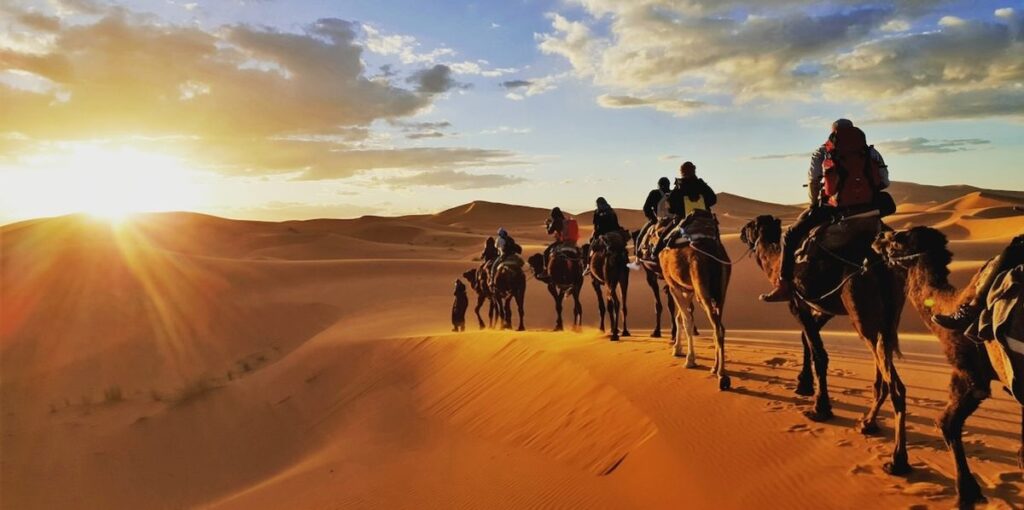The travel industry, like many others, is in the middle of a buzz and tech frenzy around artificial intelligence. For example, Airbnb is using it to stop guests from vandalizing their properties, and the Four Seasons has deployed it to further enhance its concierge services. The transformative impact of AI on tourism is undeniable.
AI is helping to make travel more sustainable in some cases, but there are limits to what AI can do, and handing over the responsibility of solving sustainability problems to AI alone is not enough.
Making our industry truly sustainable must start with us, the people, acting consciously and responsibly and educating others to do the same.
We need to dig deeper into the capabilities of AI to determine whether it will fully help in an effective and sustainable transition of the industry, or whether it is mostly wishful thinking in some cases.
AI determines seasonal high and low patterns
AI can process and analyze vast amounts of data, helping to implement sustainable solutions in travel.
For example, our team created heat maps showing the “tourism load” of each country, highlighting the places where travelers visit the most. AI helped identify the most popular routes and determine patterns of high and low seasonality.
Get digital travel tips delivered to your inbox every day
Subscribe to our newsletter below
They then worked with travel experts to offer packages to popular spots in the off-season, redistributing visitor loads to prevent overcrowding. This was a win-win, as customers also benefited from lower prices and the opportunity to explore new places.
There's more that can be done. A major problem facing the industry is that travelers don't know how to find sustainable travel options. According to Booking.com's 2022 Sustainable Travel Report, 29% of travelers surveyed face this problem, and 31% of travelers admitted that they didn't even know these types of accommodations existed.
To solve this, travel advisors can integrate AI to identify and promote sustainable travel options and responsible tour operators. Leveraging AI to examine online reviews, social media posts, and other sources can provide further recommendations and validation, making sustainable travel options more visible to the traveling public.
Tourists will not install toilets or trash cans.
The potential benefits of AI sound great, but to be successful, we need to go beyond data analysis and visualization and get to the root of the problem.
Let's consider a simple example: a tourist hikes through the Sahara Desert, where there are no toilets or trash cans, and he throws trash somewhere along the way. Of course, we can install AI-enabled surveillance cameras to track the violators, but that alone doesn't solve the problem: Somewhere along the way, trash is left behind, and the place is polluted.
This shows a lack of awareness and responsibility on the part of those in charge of maintaining the roads, in this case the government. Tourists should never install toilets or trash cans themselves – this should be done by local governments. It also illustrates an important point: these problems need to be solved by humans, not AI.
The ideal scenario: Humans and technology working together
AI-powered algorithms excel at certain things, such as optimizing travel routes and itineraries, improving the return on investment of marketing campaigns, and customizing specific experiences to fit travelers’ specific needs and preferences.
So the next time you plan to explore the beauty of the Aegean Sea, your cruise may be utilizing an AI-driven energy management system to optimize fuel consumption and reduce your carbon footprint.
Here's another example: New versions of Google Maps and Google Search can help you plan the most environmentally friendly route for your trip, including the best route to charge your electric car or the most walkable option.
But there are plenty of amazing destinations around the world that rely on local, handcrafted, and off-the-beaten-path community activities. For example, say you're visiting the Coffee Trail in Colombia. Most of the activities you'll indulge in, like interacting with local farmers and picking your own coffee beans, are run by locals, and an AI might not have any information about these undiscovered gems at all.
While technology solutions can certainly help these grassroots organizations attract more visitors and operate more efficiently, the human touch is still necessary. To deliver these experiences, travel advisors need to work with local businesses to ensure that technology enhances, rather than replaces, the rich experiences that define symbiotic tourism.
This approach has another benefit: by immersing travelers in the local culture and traditions, they gain a deeper understanding of the destination, which in turn helps them value the destination more and develops a sense of responsibility that is essential for sustainable travel.
Ensuring fair profit sharing and local revenue
There is no doubt that AI has impressive capabilities and can contribute to making the tourism industry more sustainable.
But that alone is not enough: true growth in the travel industry requires human engagement and the joint efforts of individuals, communities and governments.
As stakeholders in the travel industry, we need to actively work to ensure that benefits are shared fairly and revenues reach local communities. We also need to educate travelers and instill a sense of responsibility. This starts with helping travelers integrate and connect with the communities they visit.
By embracing our responsibility to make travel sustainable, we can preserve the wonders of our world and ensure they can be enjoyed by future generations.
About the author…
Olga Bortnikova is co-founder of Tripsider, a travel technology startup that connects users with travel creators to create customized tours.
Source link



